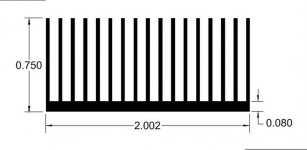I wasn't intentionally super cropping and it had become two stems. I probably killed the growth tip with a dropped light. I happened to of taken a single clone and it had happened to of been from that plant, only reason I know it was a girl. The last of my seeds are going 12/12 to sex right away. Tired of wasting time on bagseed males.
Do you use deep blues 450nm peak, or another blue?
Deep reds are only for flower or do they help in veg as well? My current light is for veg only so just checking.
How many watts are you building for and how many square feet are you covering with it?
What driver are you using and where did you get it?
Thank you much
Do you use deep blues 450nm peak, or another blue?
Deep reds are only for flower or do they help in veg as well? My current light is for veg only so just checking.
How many watts are you building for and how many square feet are you covering with it?
What driver are you using and where did you get it?
Thank you much


